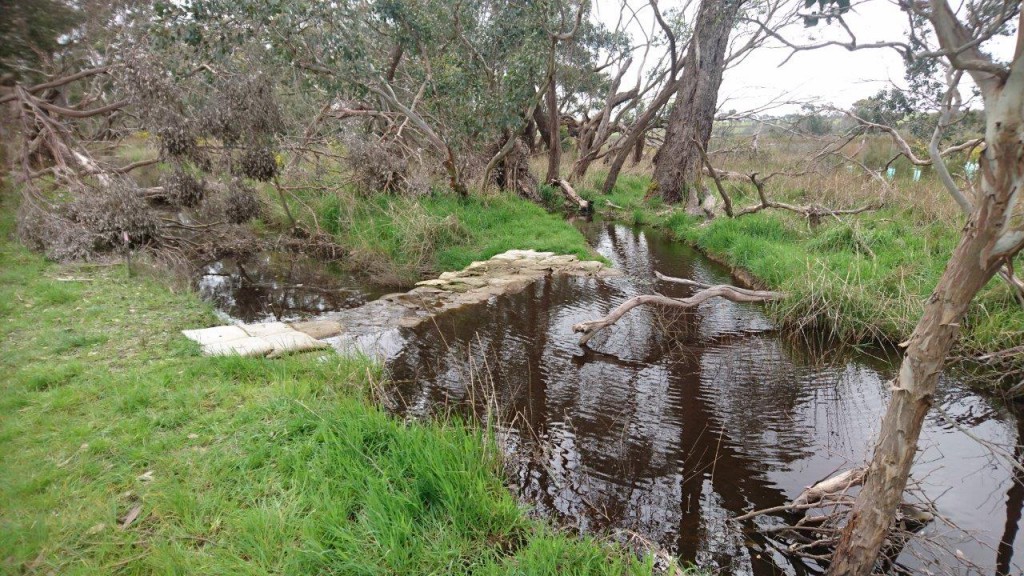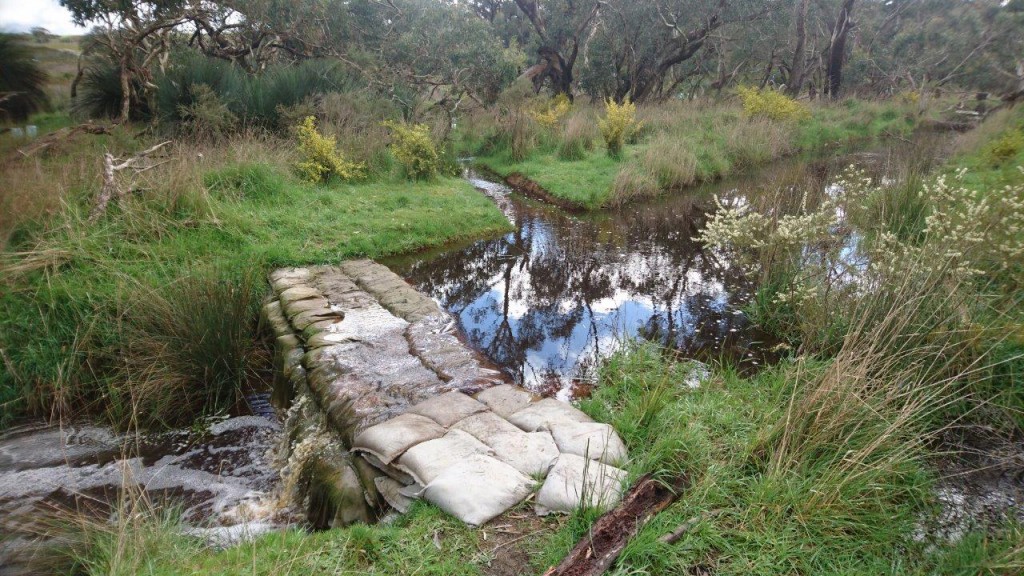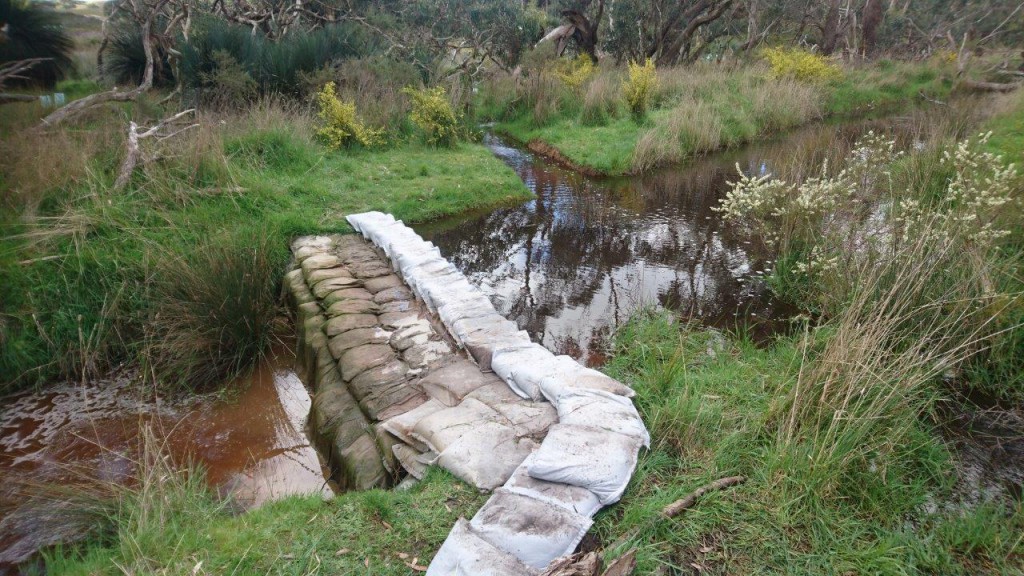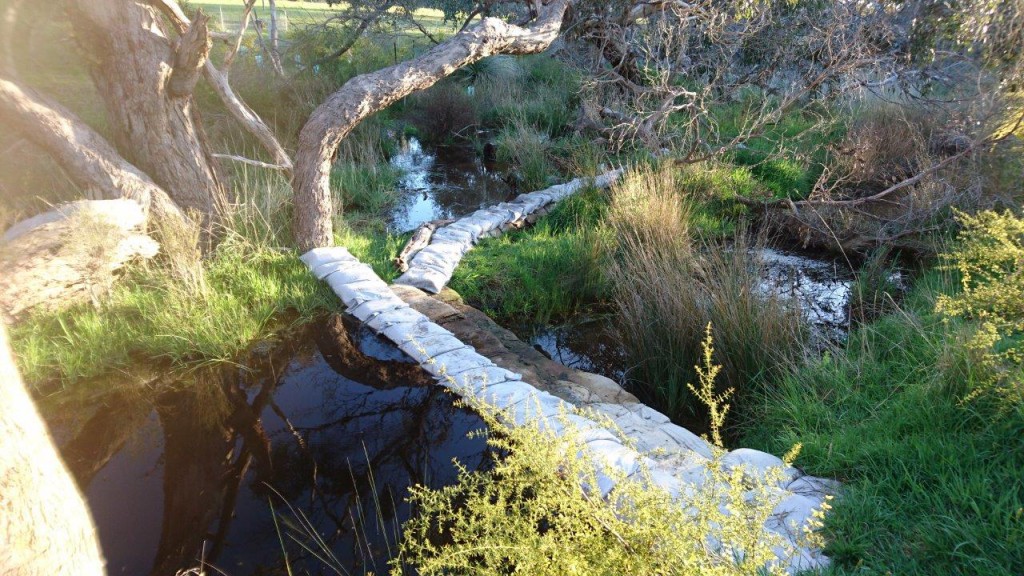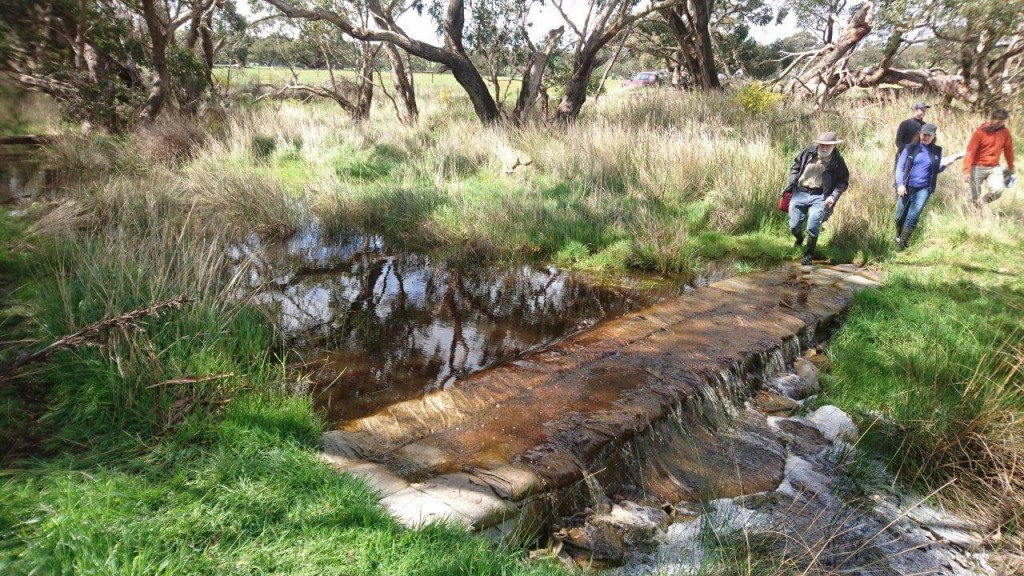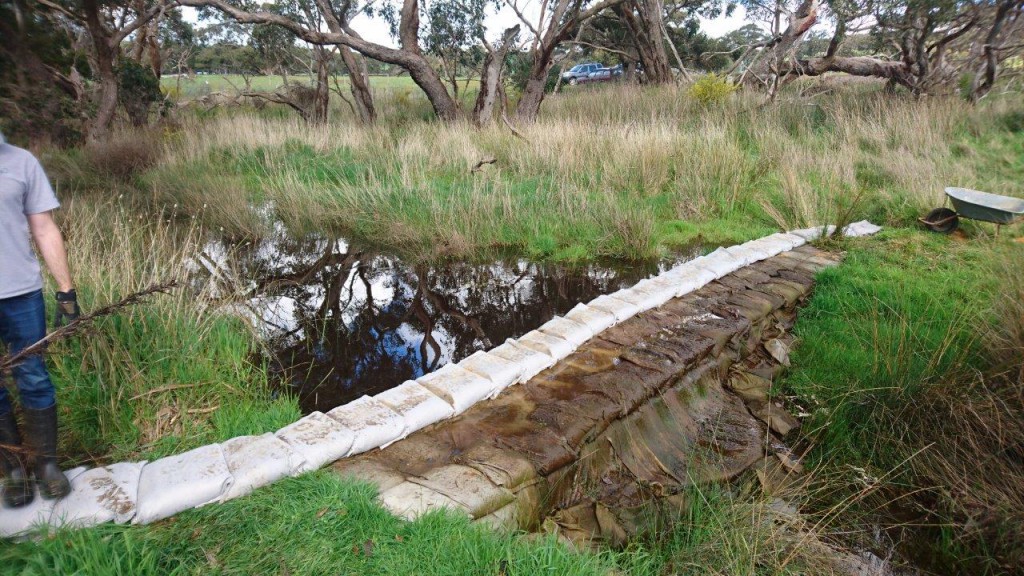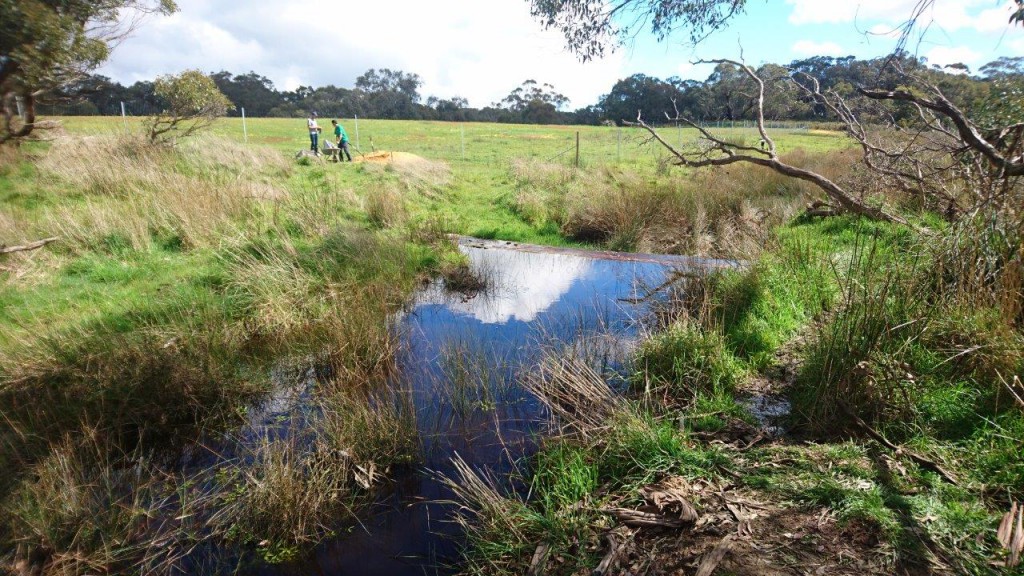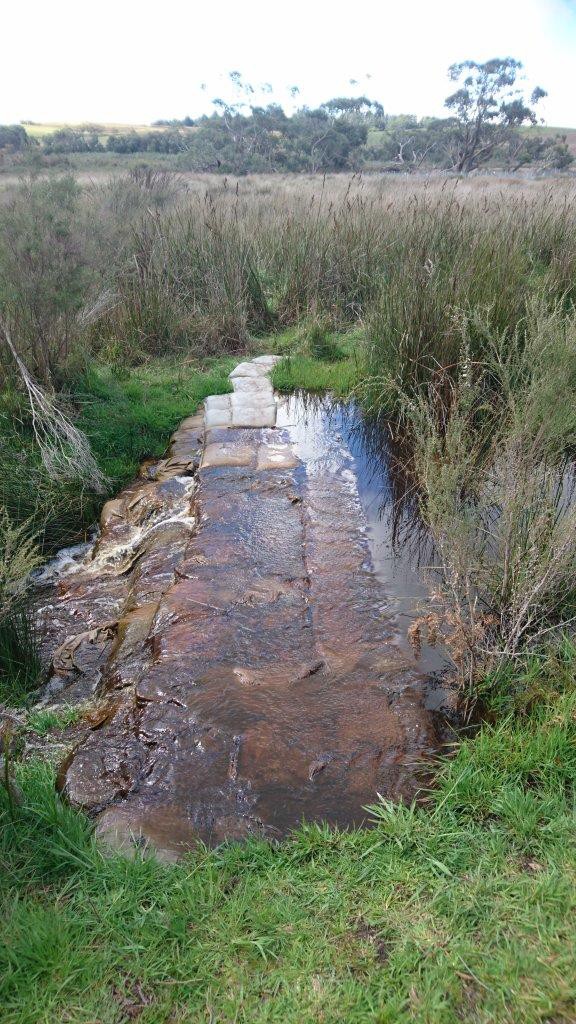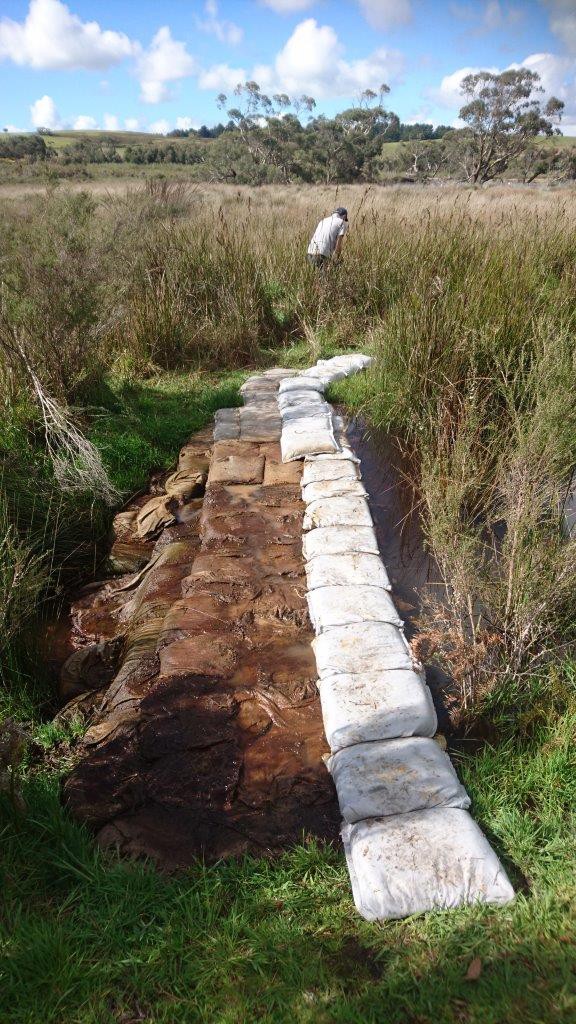Fine tuning the operation of the restoration trial structures at Glenshera Swamp, Stipiturus CP
While at Glenshera Swamp for a couple of days in late September, we were able to see precisely how responsive an already wet catchment above the swamp is to small amounts of rainfall – with 8.5 mm of rain falling overnight on the 24th of September. So after our restoration tours wound up at lunch time on the 25th of September, NGT’s Ben Taylor, Thai Te and Mark Bachmann took the opportunity to slightly adjust four of the restoration trial structures, watching the response in real time. Given that our goal is to divert all low to moderate flows along the creek’s natural meanders and towards the swamp, we weren’t entirely satisfied that, despite the structures working to divert a portion of the flows, this small amount of rainfall had still caused the structures to over-top with increased flows down the bypass drain.
So with shovels and sandbags ready to go, we utilised some of our left-over sand from the autumn works and made a few minor adjustments. This management flexibility is one of the key advantages of this flexible restoration method, and allows us to calibrate the operation of the structures prior to considering options for consolidating them (i.e. making them more permanent) at some point in the future.
Structure 1:
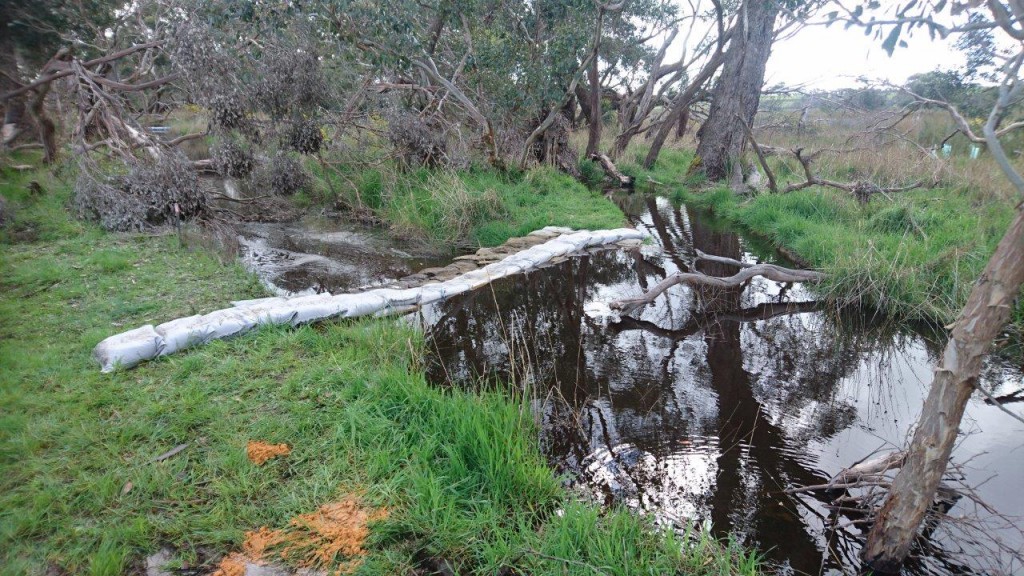
Structure 2:
Structure 3:
Structure 5:
This is the key diversion point where the creek and drain diverge, so we were keen to ensure that observed moderate flows were directed along the natural creek line towards the swamp. The top-up works were successful, with the flow rate immediately increasing along the natural creek line towards the swamp.
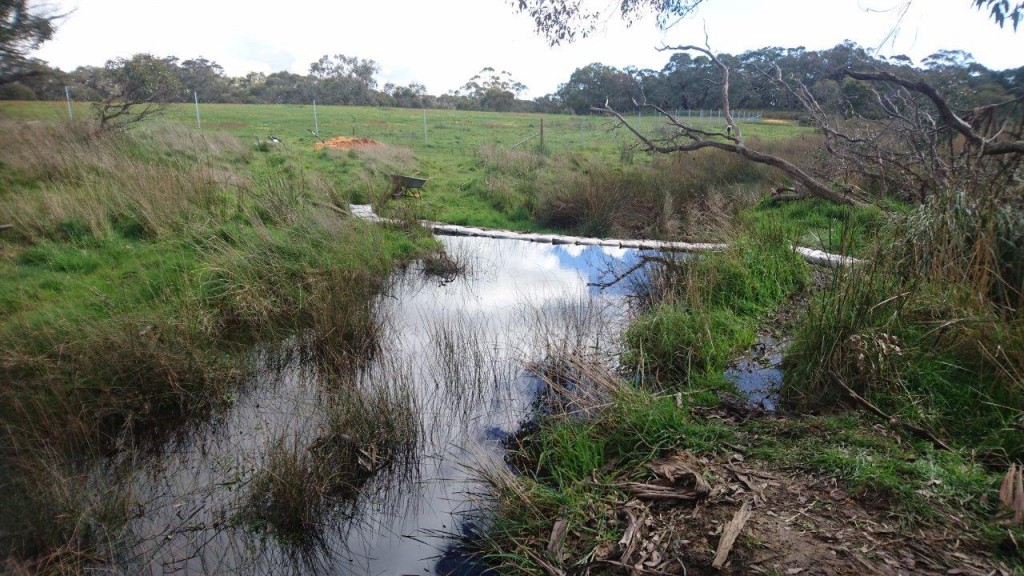
Structure 6:
This structure provides the last chance to prevent draw-down away from the swamp and was also over-topping, so we were also keen to lift it slightly while we were on-site.

